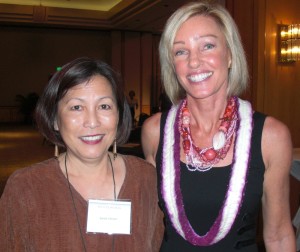One of the best teachers to stop me from buying stuff I really don’t need (doodads) is selling those unused items on eBay. Rarely will you get what you bought – though sometimes you get pleasantly surprised – a Louis Vuitton bag that was bought for $800 actually sold for $800 on eBay with heavy bidding at the end! Most things we have laying around will sell, but not for retail.
Here’s how I sell – it’s not as hard as it used to be. Please give it a go. It seems daunting, but once you’ve started, it’s easy peasy.
First, gather your items, at least 6 or more. Reason to do this is to do bulk steps which cuts down on time spent on editing photos. It helps if they are the same type of things, i.e. clothing, or pictures, but it doesn’t have to be.
Next, find a good uncluttered spot on your lanai, lawn, entrance, or nice floor (no patterned rugs) and take pictures – the better you can with the best lighting. This is kind of a pain, but well worth the effort. Pictures sell, period. Take front, back, side, details, and especially take a good picture of the flaws or damages.
BIG NOTE UPDATE: eBay now has an app for your iPhone. This makes is super duper easy to put an item up for sale and take your pictures on your iPhone without having to go through the photo uploading the old way. Fantastic stuff!!!
If you have an iPhone or smart phone with camera capabilities, go to your iTunes account and download the free eBay app. Name the item, choose the category, shoot the pictures, select the shipping and other options, do a brief description, and either save or post. After that has been done, then use your computer to sign into your eBay account, and edit the item that you just posted with your iPhone. It is easier to edit and add to the description from your computer but be sure to do it before anyone places a bid on your item (otherwise you are more limited in editing).
The following in bracket and italics is if you DON’T use your smart phone and the eBay app to load an eBay item that you want to sell.
[I have a Mac, so the following is how I upload and edit my pictures. Using the cord that connects the camera (I use a Kodak EasyShare Z210 which is an average digital camera), connect to USB port of computer and the camera. Turn the camera on. iPhoto automatically opens, the camera icon appears on the menu bar of iPhoto, and it asks if I want to download all pictures.
I usually say yes, and if I have old pictures that I have saved on my camera, iPhoto will ask if I want to also download duplicates, which I say no.
After the (newer) pictures are downloaded, iPhoto will ask if I want the pictures that have been downloaded to be deleted from the camera. I usually say yes, but if you are just getting started with editing and such, you might want to say no for now, just in case you need to download the same photos again in case of disaster.
Eject the camera icon, then turn off camera and disconnect cable from both computer and camera ports.
The recent photos are now in the newest event folder. I open the folder and “select all” of the photos. Using iPhoto, I crop each one – just to tidy up each photo – eliminating background space or whatever doesn’t need to be in the picture, and advance to the next photo using the forward arrow on the screen. I also “delete” the photos that I don’t think I will need or if they are really poor shots. At this point you will know if you have a bunch of good pictures, or if you really need to shoot the items again in better light, better background, better focus.
Next, I create a folder on my desktop, and name it “ebay [today’s date] photos” (you can name it anything you want). Going back to iPhoto, I choose the recent event of eBay shots, “select all”, then drag all of those nicely cropped photos into the folder of “ebay photos” on my desktop. You many have to put the “ebay photos” folder near an edge of your computer so you can see it outside of the iPhoto window.
All of your pictures should now be in the desktop “ebay photos” folder. Open the folder. All of the photos will be listed with a bunch of goobly gook numbers.jpg. These all need to be named so you can identify which picture is for what item.
Single click on the goobly gook number of the first item on the list. Give it an identifying name – i.e. if it is an Ann Taylor blouse, name it “annfront” if it is the front of the blouse, “annback” if it is the back, etc, etc. Keep it simple but keep the first part of the identifying name the same – “ann”. Each time you do this, the item on the list moves down, and the next goobly gook number jpg is at the top of the list. Go through the entire list and name all photos. The “.jpg” will remain as part of the identification, so leave that alone.
After all the photos in the list have been named (you should see a pattern of all the same items being grouped together because of how you have identified them), pat yourself on the back. (I usually have my cheetos and coke at this time.)
Now, “select all” the photos in the list and double click to open. With the Mac computer, the photos open in “Preview”. I love this part and how easy it is to size the photos, with options to edit if needed.
All your pictures are open, but you will just see one at a time, with a vertical slide show on the side of what is next. From the top menu bar, select “Tools” and choose “adjust size”. I usually enter 1000 pixels in the first box (for width), and because the default is set to “size proportionately”, the height dimension will change automatically.
Go to next, and do the same for the next picture, entering 1000 in the width box. Continue for all pictures. You can also edit the color, saturation, exposure for each picture if you want, but if you have taken good pictures in good light, you won’t need to mess with that.
Close out the window, and it will ask if you want to save changes. YES! You’ve done all that work, you really should save it. If for some reason you are really unhappy with the editing you have done and you have saved all changes, you can always delete and go back to the originals in iPhoto and go through the process of naming, editing and sizing until you are happy.
That was the hardest part – taking pictures, and formatting them for eBay.]
Now, open up eBay. Go to eBay.com, the greatest auction site on the planet. If you don’t have an account yet, open one. It is free. The hardest part is choosing a name. This is how you will be identified, so choose a good one.
You will also open a PayPal account (eBay owns PayPal) from which you will get paid. Ebay and PayPal will make money from fees that are charged to you automatically. People grumble about that, but it is way cheaper than a booth at a craft fair or renting a store front. And we get to sell our junk as well as our treasure.
I find that eBay has been very slow in opening up to sign in, but hopefully they fix that soon. Be patient, it will be worth it.
From the eBay top menu bar, choose “Sell”. A big blue arrow will point to “List your item”. Put a brief description in the “What’s it worth?” box (i.e. “Ann Taylor blouse”), click the “look it up” tab and the program will show you a range of past prices. Pretty cool stuff.
Or, just bypass that and click on “List your item”. This will bring you to the sign in page (if you haven’t already signed in). You can also register this way if you haven’t ever registered yet.
Enter keywords for your item, and a bunch of categories will be displayed. Choose the category that best fits your item. For now, just choose one category or else your fees will be more. Click “continue”.
Now you are on the real page of your listing, and your adventure is at the starting gate. Put the title of your item, and make it sound good. List the condition, and specifics.
About half way through, you will add pictures. The first picture is free, subsequent ones are 15¢ each. Sometimes eBay has promotions with free listings and free pictures. Put your best pictures that show the best to wow the buyers, but make sure you also have good pictures of the flaws and drawbacks so they know what to expect.
This is where you will be so happy that you have named your photos and already edited, cropped, and sized for ebay. Click on “add pictures” and you will need to find your folder on your desktop that you named earlier “ebay pictures”. Select “Browse”. Choose “Desktop” and then choose your “ebay pictures” folder.
The “ebay pictures” folder will open a list to display all of the photos you have. Click on a picture for the item you are listing, and “open”. The photo will appear in the add pictures box. You can continue to add more photos by clicking on “Browse”. You can add up to 12 photos this way (but remember usually on the first one is free). After you have selected the photos for your item, click on “Upload”. It will take a little while to upload all photos.
The pictures will be displayed, and you will have the option of moving the photos in different orders, or deleting. The first picture in the queue is the one that is going to be seen foremost, so make sure that is the best one that represents the item.
Next, describe the item – and do your best! Take measurements, gush about the item, how wonderful it looks, feels, etc. Just don’t over sell and over promise because the buyer on the receiving end will get ticked off if they get a frog when they were expecting a princess.
eBay has a lot of options that you can choose from for listing your items. I like to choose free shipping because I think that appeals to everyone and helps sell my items. I also try to list items on Friday for a 7 day auction so it ends on Friday. Just make sure the time of day that you list is a good time for people on the Mainland. I once listed some killer stuff on eBay and worked through the night. Most of the later items got posted late at night, which was in the wee hours of the morning for the Midwest and East Coast. Not good – I didn’t do well on that bunch at all because there was no frenzy at the end of the auction. Everyone was asleep.
To compensate for this, eBay has an option to set your start date and time for a fee of 10¢. Well worth it, I think. I have used the option to start all my auctions at the same time and on the same day.
Choose your shipping options and method of payment (I use PayPal).
After going through the options, press “continue” and you will be on the final page, where you will see a brief picture of what this listing will be like, as well as a display of the fees owed for posting your auction item.
Click on “List your item” and you are live!!!
After your listing is live, you can go back to your iPhoto library and delete all those ebay photos, because you don’t need to store them there anymore, and you will save some space.
When your item does sell, eBay will send you a message, and you will use that to email your winning bidder.
After they pay (very easy through PayPal) print a shipping receipt, put it in a box or bag (learn about the Forever stamp, rates using priority mail, and other mailing options), and mail it out.
I like to inform my customers that the package has been shipped out.
PayPal will automatically collect your money for you. You can leave feedback for each person that bought something from you, or you can wait until they leave feedback for you before you decide what rating to give them. I usually give them all 5 stars.
That’s it – very briefly! There are courses and books on how to sell better on eBay. I do have Chris Bowers’ program, but haven’t used it – and I should.
Good luck on your eBay sales. Make some money, clear out the clutter from you home, and have fun!

 Do NOT waste $3000 on the
Do NOT waste $3000 on the 

